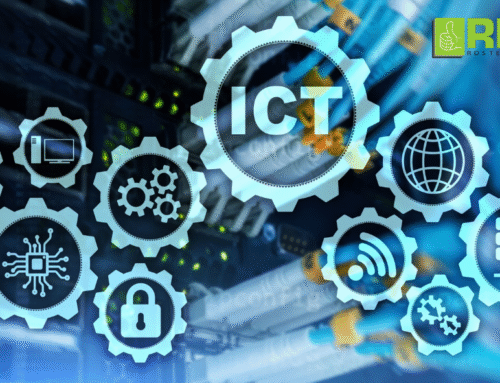Introduction To Business Security Systems
In today’s digital age, the need for robust business security systems is more critical than ever. As businesses increasingly rely on technology to drive operations, store data, and facilitate communication, ensuring the protection of sensitive information and physical assets has become paramount. A comprehensive business security system encompasses various tools and strategies that safeguard both digital and physical perimeters.
Advanced Cybersecurity Measures
Digital security involves the use of advanced cybersecurity measures to protect data from cyber threats such as hacking, phishing, and malware attacks. This includes the implementation of firewalls, encryption, multi-factor authentication, and regular software updates to ensure networks and data remain secure.
Physical Security Systems
On the other hand, physical security focuses on the protection of tangible assets through measures like surveillance cameras, access control systems, and alarm systems. These components work together to prevent unauthorized access, minimize theft, and ensure the safety of personnel and property. As businesses grow, so does the complexity of their security needs. Therefore, an integrated approach that combines both digital and physical security is essential to successfully mitigate a broad spectrum of risks.
Companies must not only invest in the latest technologies but also continuously assess and update their security protocols to adapt to evolving threats. Ultimately, the effectiveness of a business security system hinges on its ability to provide comprehensive protection while enabling seamless business operations.
Understanding The Importance Of Data Security
The importance of data security in business cannot be overstated, as it serves as a critical line of defense against countless potential threats. Businesses, regardless of size, are increasingly becoming targets for cybercriminals who seek to exploit vulnerabilities for financial gain or to disrupt operations. Data breaches can result in significant financial losses, legal ramifications, and irreparable damage to a company’s reputation. Therefore, understanding data security is essential for safeguarding sensitive information such as customer details, financial records, and proprietary business insights.
Implementation of Robust Measures
Data security involves implementing robust measures to protect information from unauthorized access, use, disclosure, disruption, modification, or destruction. This extends beyond merely installing antivirus software or firewalls; it requires a comprehensive strategy that includes encryption, access controls, and regular security audits. Emphasizing the importance of data security fosters a culture of vigilance within the organization, where employees are educated on potential threats and the need for constant vigilance.
Regulatory Frameworks
Regulatory frameworks worldwide are increasingly mandating strict compliance with data protection standards, making it essential for businesses to prioritize data security to avoid legal penalties. By investing in data security, businesses reduce risks and enhance trust with customers, partners, and stakeholders, solidifying their reputation and ensuring long-term success in an increasingly interconnected world.
Types Of Security Systems For Business Perimeters
When it comes to securing business perimeters, a comprehensive security system is crucial to safeguard against unauthorized access, theft, and potential threats that could jeopardize both physical and data security.
Advanced Surveillance Systems
One of the most prominent methods of protecting business perimeters is through advanced surveillance systems. These systems often use high-resolution cameras positioned strategically around the property to monitor and record activities.
They can be integrated with motion sensors and facial recognition technology to provide real-time alerts about suspicious activities, thereby enabling swift action to be taken when necessary.
Access Control Systems
Another essential component is access control systems, which regulate who can enter certain areas. This could involve key cards, biometric scanners, or even mobile apps that grant or restrict access based on advanced criteria. Such systems help ensure that only authorized personnel can access sensitive areas, reducing the risk of internal threats and breaches. Perimeter intrusion detection systems (PIDS) are also widely used.
These systems employ sensors, such as seismic, infrared, or microwave sensors, to detect any intrusion attempts along the perimeter fences or walls. They provide early warnings, thus allowing for prompt intervention.
Data Security Measures
Finally, integration of these systems with cybersecurity measures ensures a holistic approach to security. Protecting the perimeter with physical security systems, while also safeguarding data from cyber threats, ensures that both physical and digital vulnerabilities are addressed, maintaining the integrity and safety of business operations.
Integrating Cybersecurity With Physical Security
In today’s interconnected world, the lines between cybersecurity and physical security are increasingly blurred, necessitating a holistic approach to safeguarding business operations. Integrating cybersecurity with physical security involves creating a comprehensive defense strategy that addresses threats in both the digital and physical realms. This integration is crucial as cyber threats can often originate from or lead to physical security breaches, and vice versa.
By harmonizing these two facets of security, businesses can develop more robust prevention, detection, and response mechanisms.
Symbiotic Nature of Physical and Digital Assets
The convergence of these security domains begins with acknowledging the symbiotic nature of physical and digital assets. For example, access control systems, once solely under the purview of physical security, are now intertwined with IT infrastructures, often relying on digital credentials and network communications. This dependency highlights the need for cohesive policies that address both digital vulnerabilities and physical points of entry.
Employing technologies such as IoT sensors and surveillance cameras with advanced analytics can provide real-time data that enhances the situational awareness of both security teams.
Integration of Security Strategies
Integrating security strategies can facilitate a unified reporting and monitoring system, enabling businesses to respond swiftly to incidents. Collaboration and communication between IT and physical security teams are essential for sharing insights and threat intelligence. This collaborative approach ensures that businesses are not only securing their data but also fortifying their physical perimeters, resulting in a resilient, comprehensive security posture.
Best Practices For Securing Business Data
Securing business data is crucial to safeguarding a company’s integrity and maintaining customer trust. Best practices for ensuring robust data security start with understanding what data you collect and store, then implementing a data classification system that categorizes data based on its sensitivity and value to the organization. This allows for prioritization in data protection efforts. Employing encryption is critical; data should be encrypted both at rest and in transit to prevent unauthorized access during transmission and storage.
Implementation of Strong Access Control
The implementation of strong access controls is necessary. Ensure that only authorized personnel have access to sensitive data and regularly review user permissions to maintain this control.
Software Updates
Regularly updating software and systems is a basic yet crucial step in protecting data from vulnerabilities and exploits. Companies should adopt a comprehensive security policy that includes regular penetration testing and vulnerability assessments to identify and address potential weaknesses. Employee training cannot be overemphasized; employees are often the first line of defense, so ongoing education about potential threats such as phishing is vital.
Incident Response
Developing an incident response plan can make a significant difference in minimizing damage in the event of a data breach. This plan should include procedures for communication, containment, and remediation, ensuring a swift and effective response to any security incident. Such proactive measures collectively strengthen the defense mechanisms against data breaches and maintain business integrity.
Future Trends In Business Security Technology
As technology continues to evolve at an unprecedented pace, the future of business security systems is set to undergo significant transformations.
AI and Machine Learning Integration
One of the most prominent trends is the integration of artificial intelligence and machine learning into security protocols. These technologies enable businesses to anticipate and respond to threats more swiftly and accurately by analyzing vast amounts of data in real-time.
Internet of Things (IoT)
The rise of Internet of Things (IoT) devices brings both opportunities and challenges. On one hand, IoT can enhance security systems by providing more data points for analysis and decision-making. On the other hand, each connected device represents a potential entry point for cybercriminals, necessitating robust security measures.
Cloud-Based Security Solutions
Cloud-based security solutions are also gaining traction, providing scalable and flexible options that can be customized to suit specific business needs. This shift not only allows for better accessibility but also ensures that security measures are constantly updated to counter new threats. Moreover, blockchain technology is emerging as a viable means of securing data transactions, providing an immutable ledger that enhances transparency and reduces the possibility of data tampering.
As businesses lean into these technological advancements, the emphasis on developing comprehensive cybersecurity strategies will increase, focusing on proactive risk management and the integration of cutting-edge technology to protect both digital and physical business assets.
Secure your business data and perimeter with reliable security cameras and trusted cybersecurity software. Get in touch with RDS, one of the leading IT solutions companies in Miami, offering efficient business security systems for all types of businesses. Call (888) 242-4242 or send us an email for more information today.

















